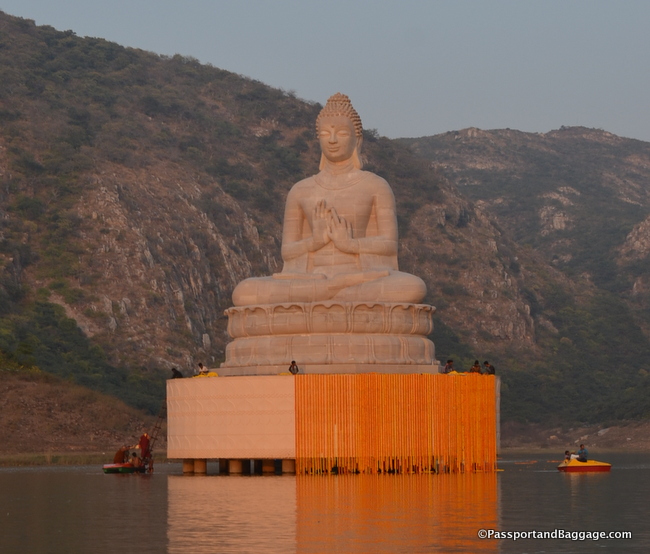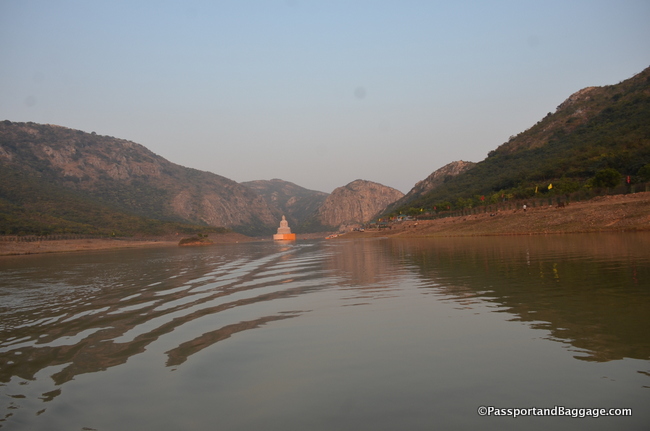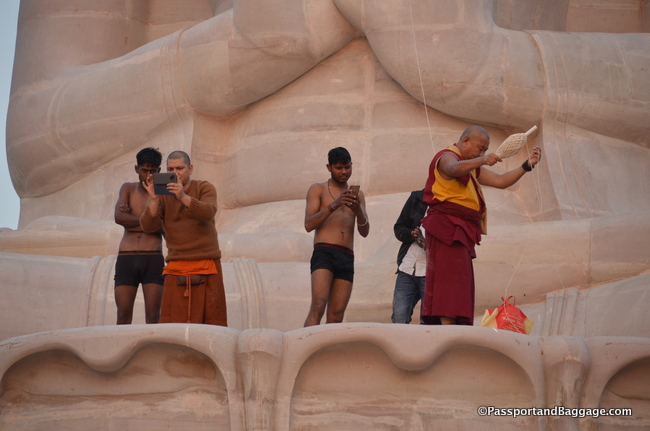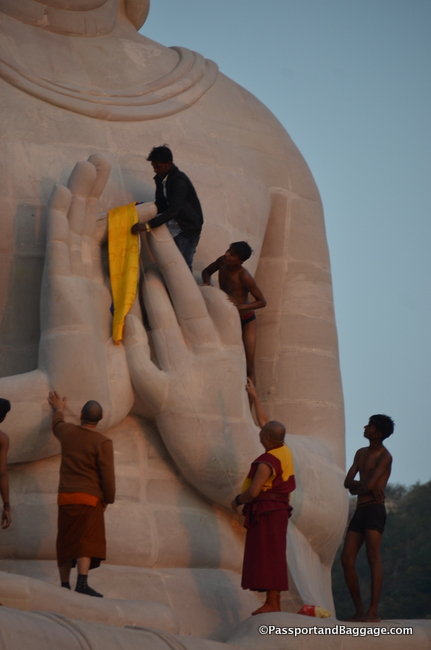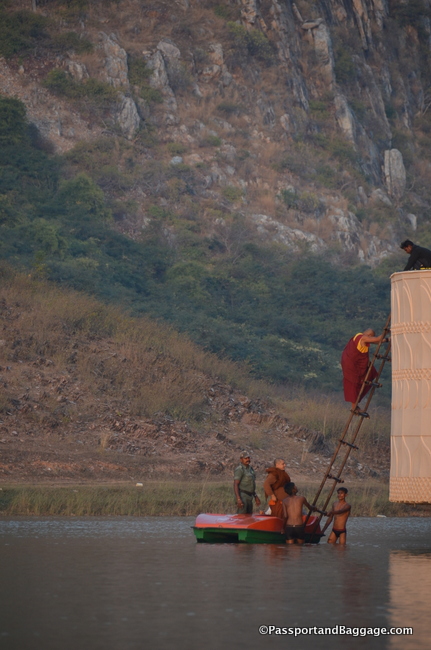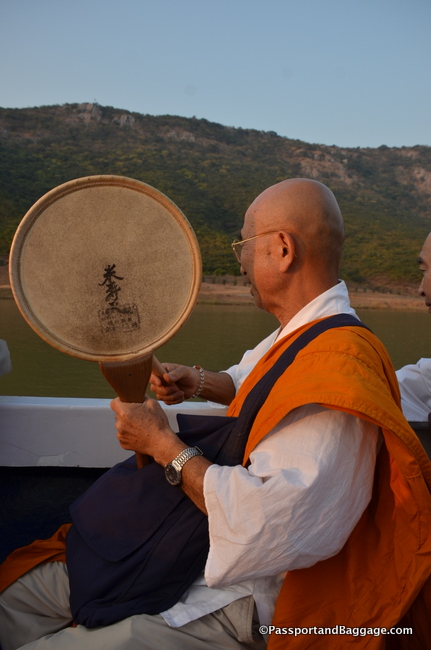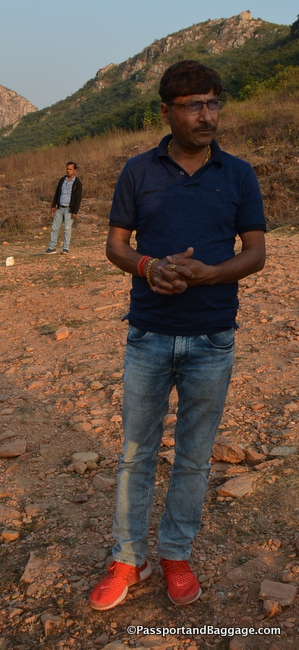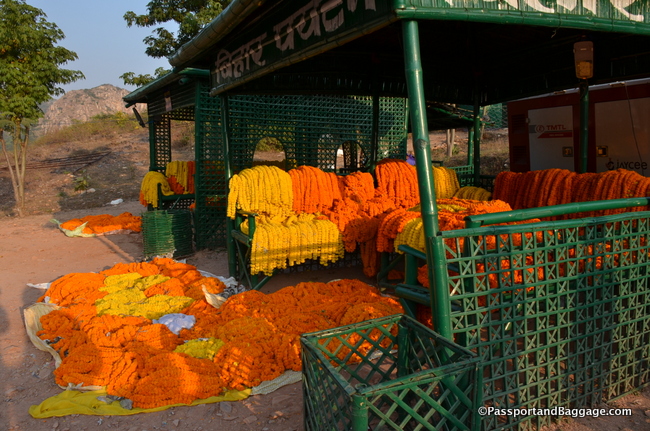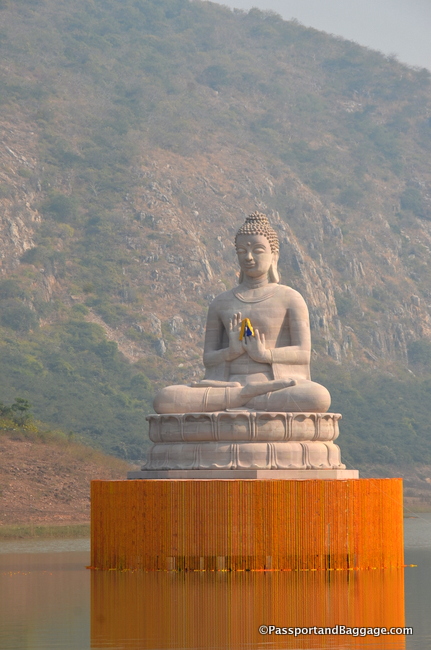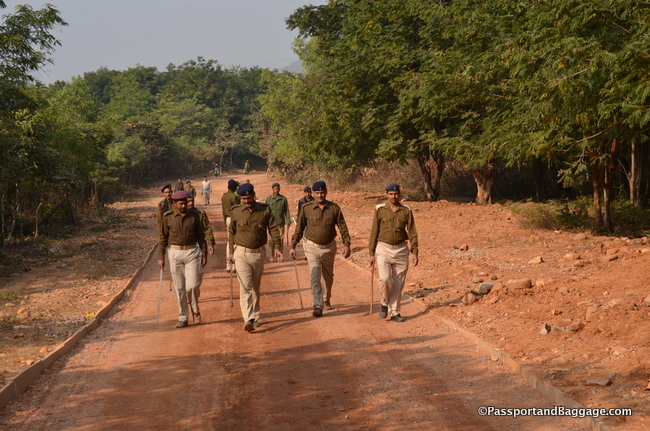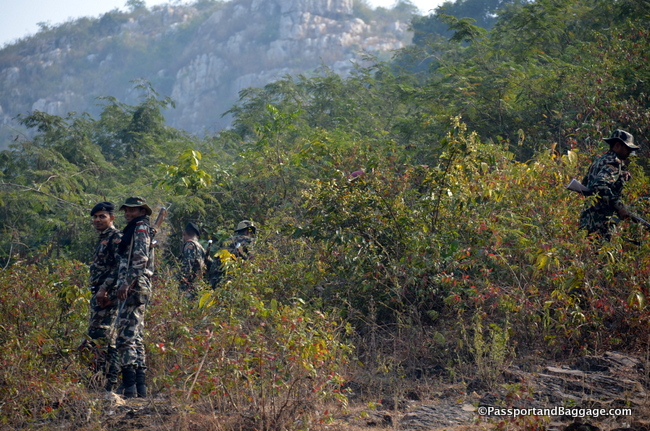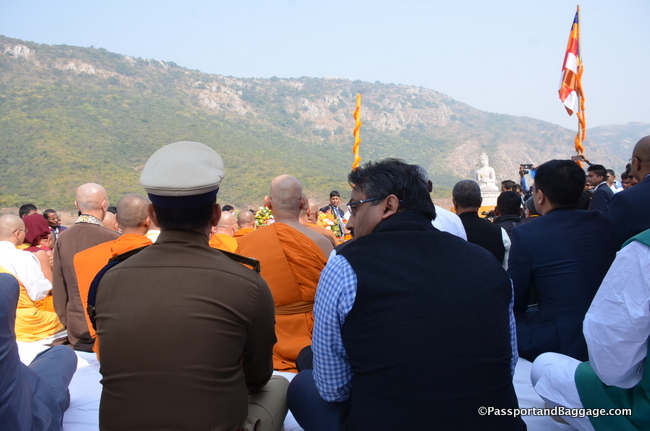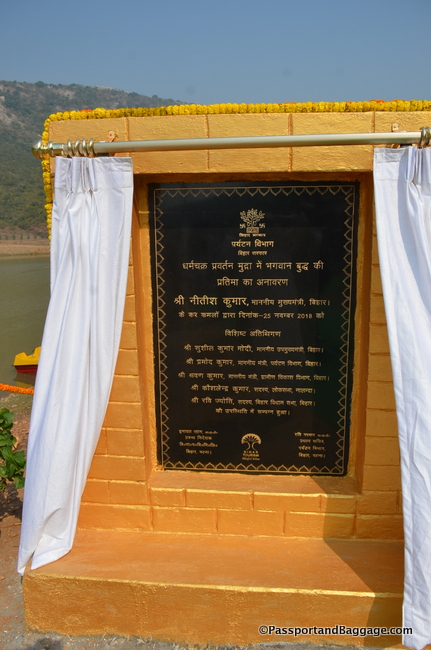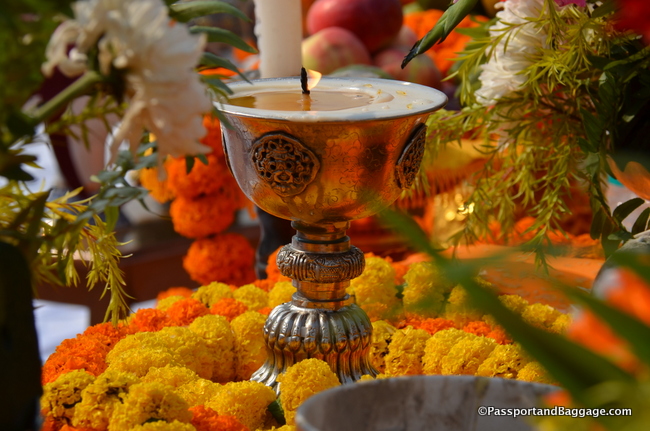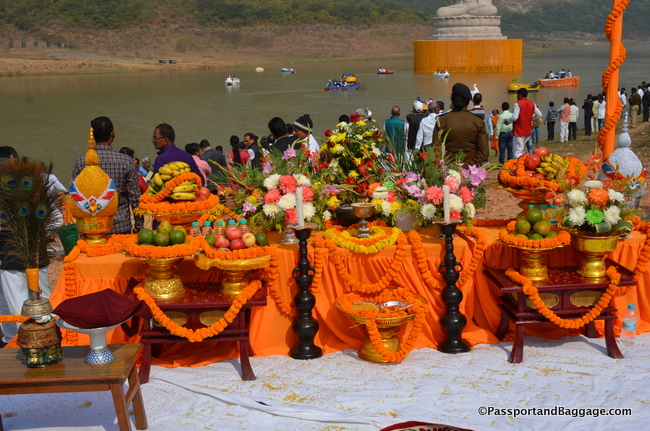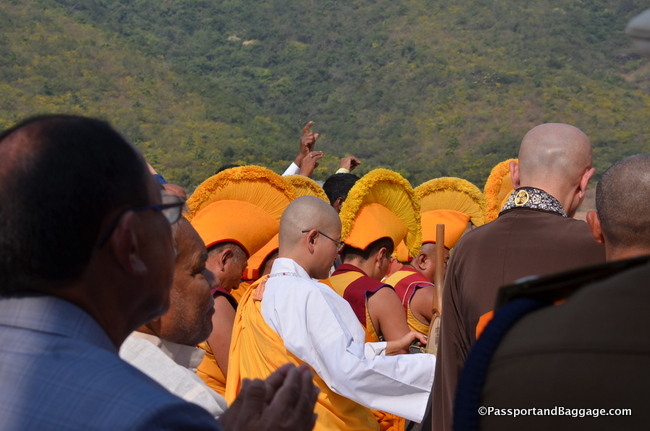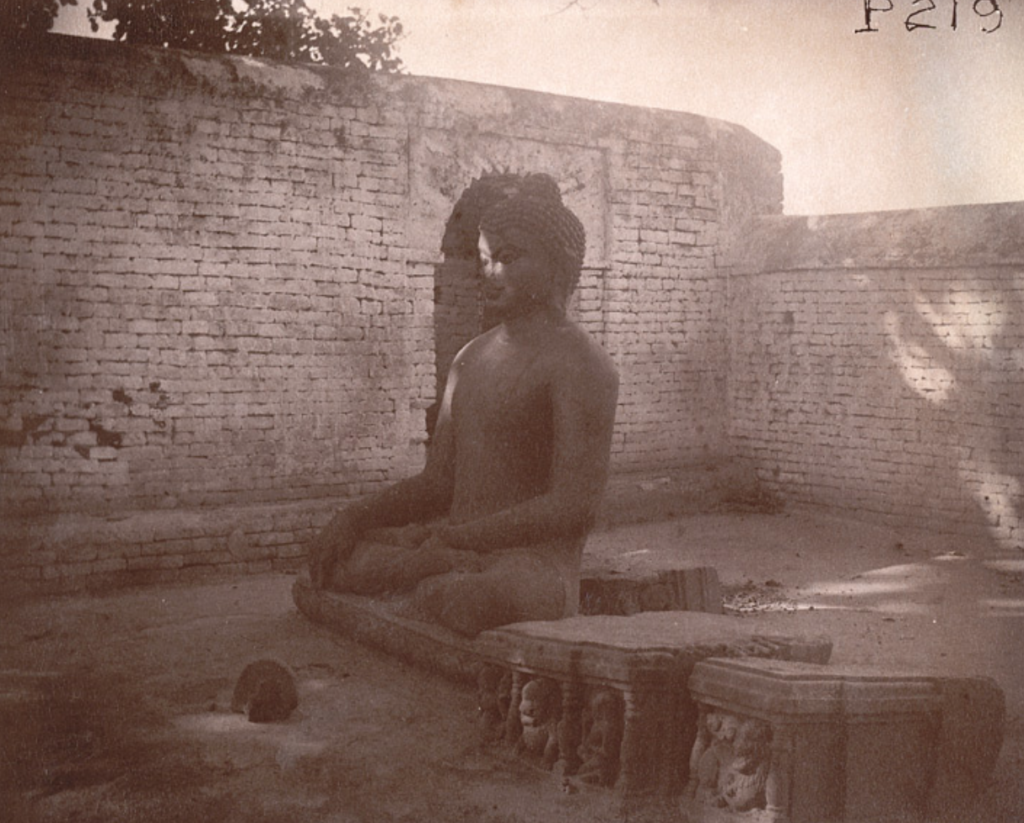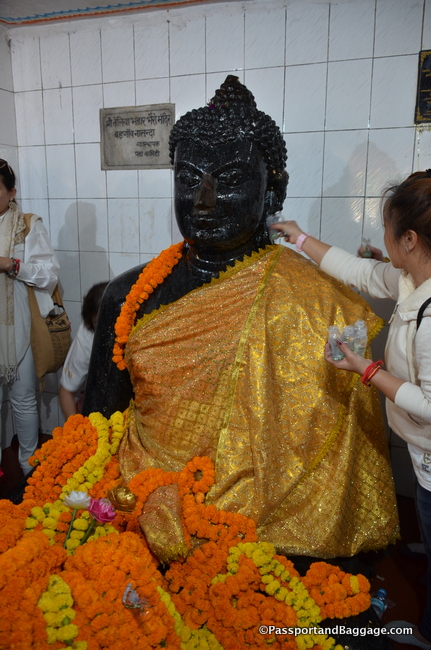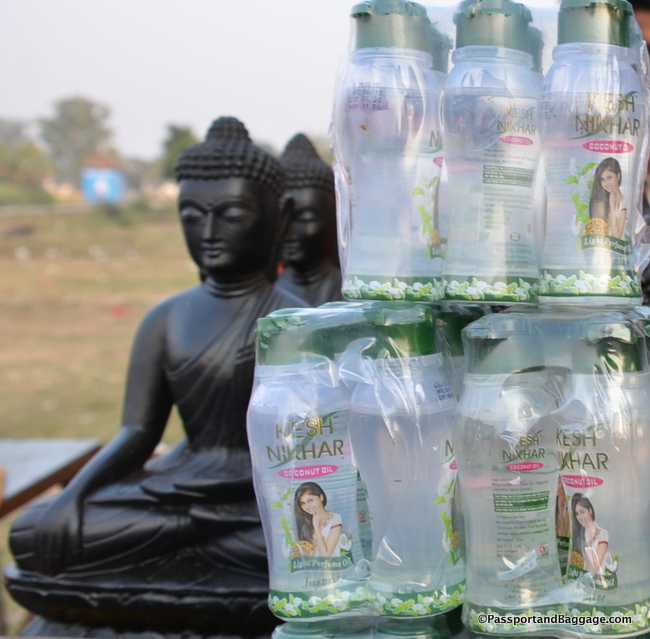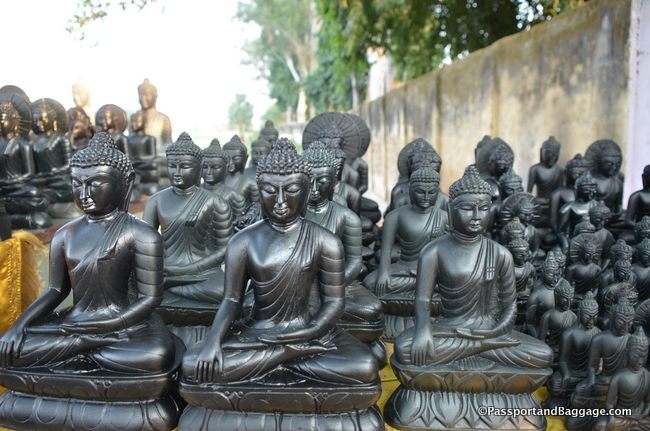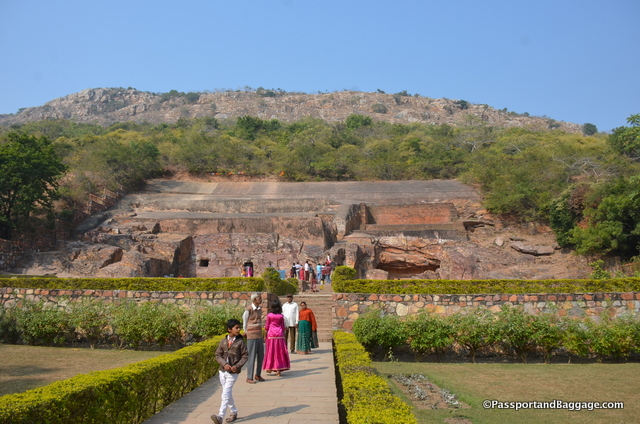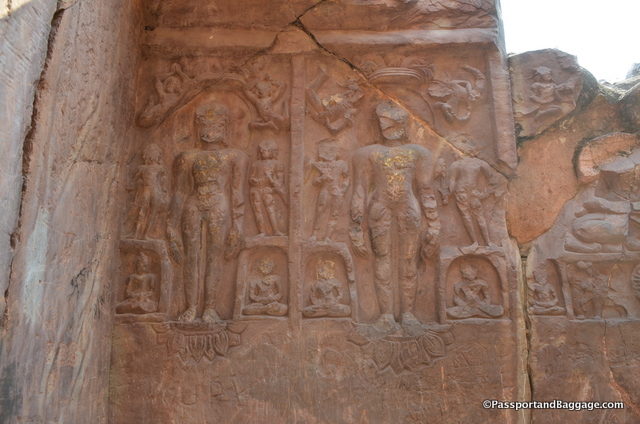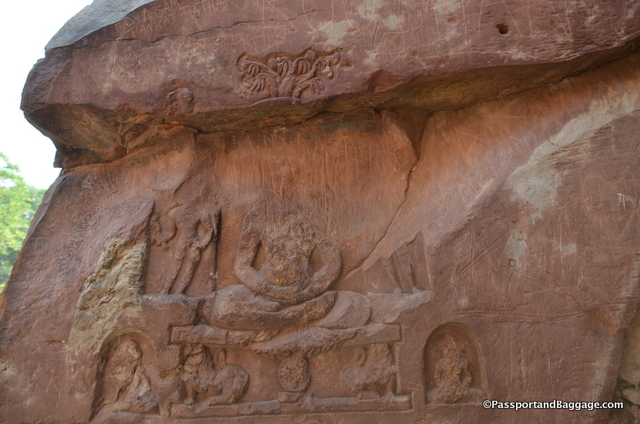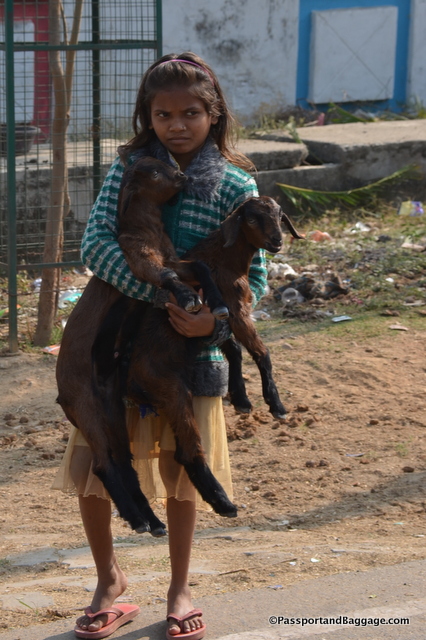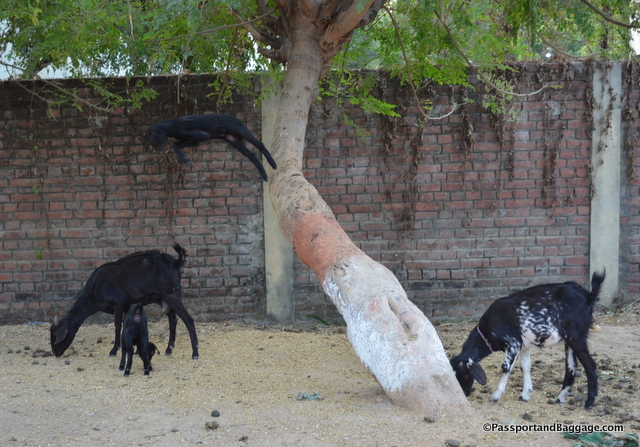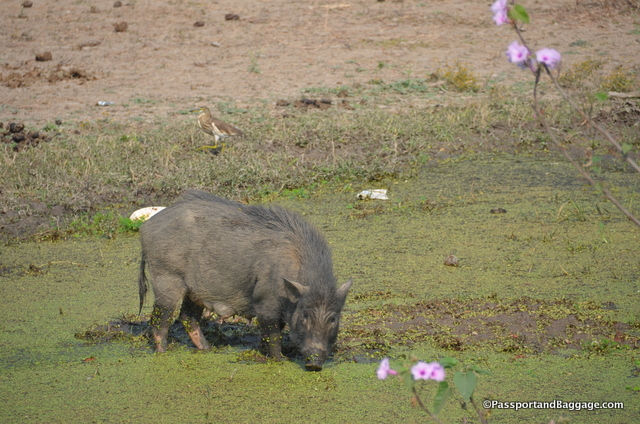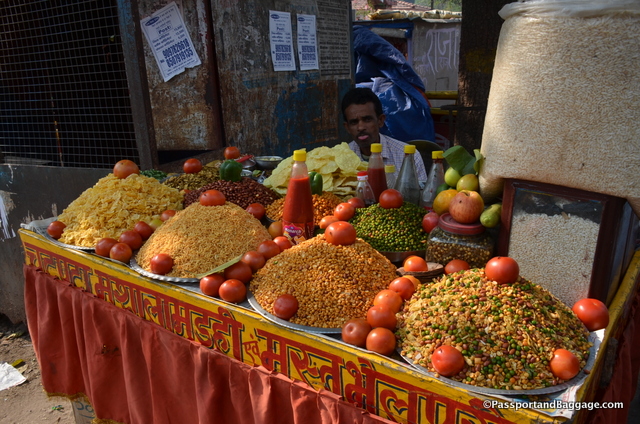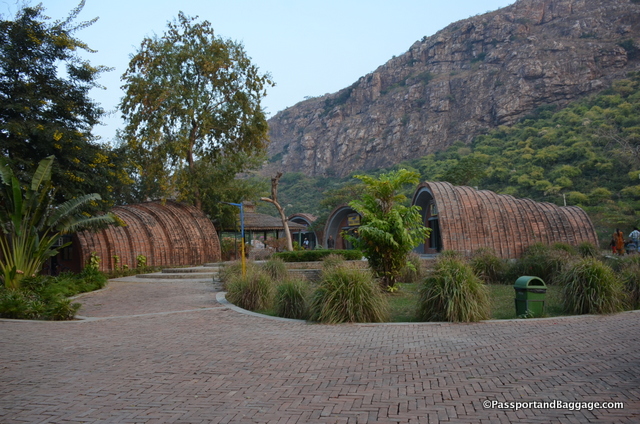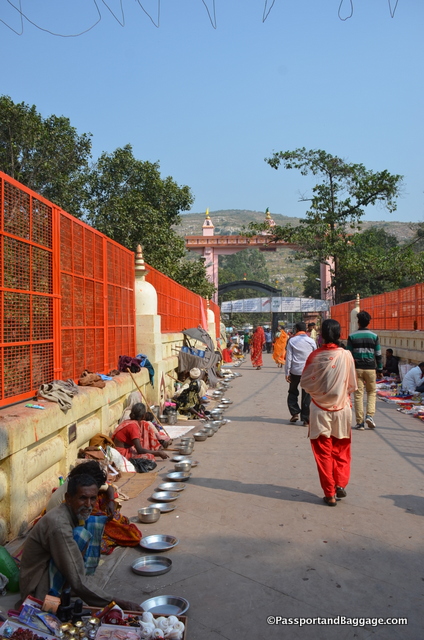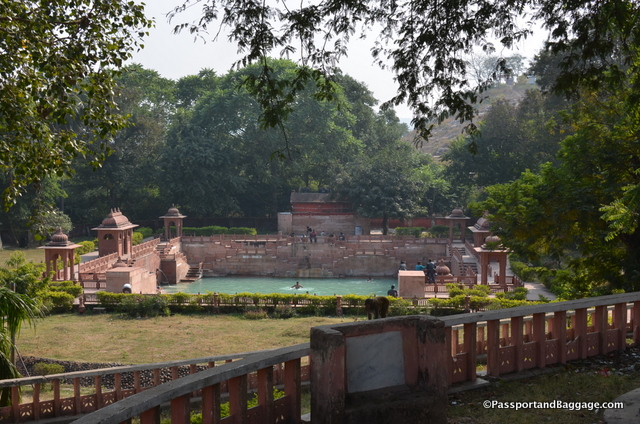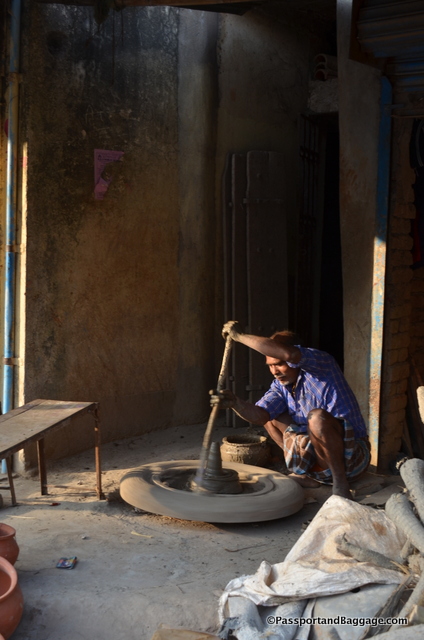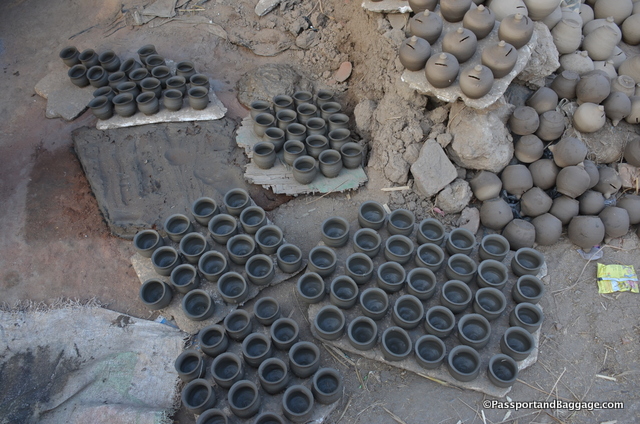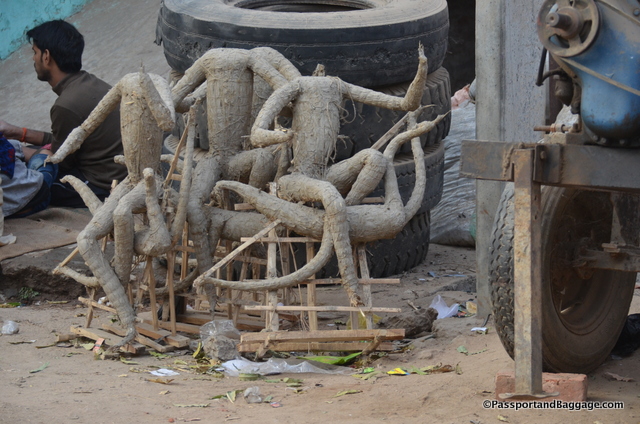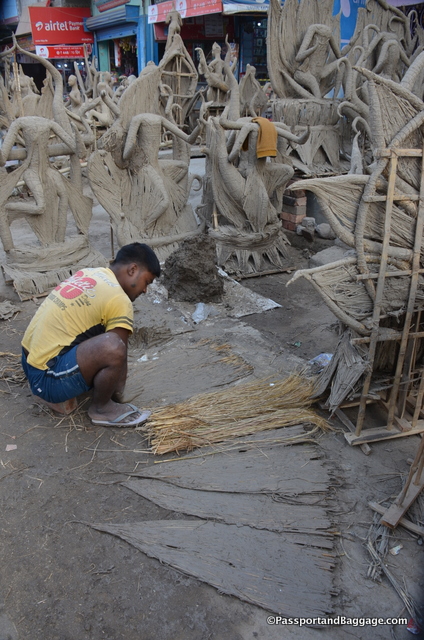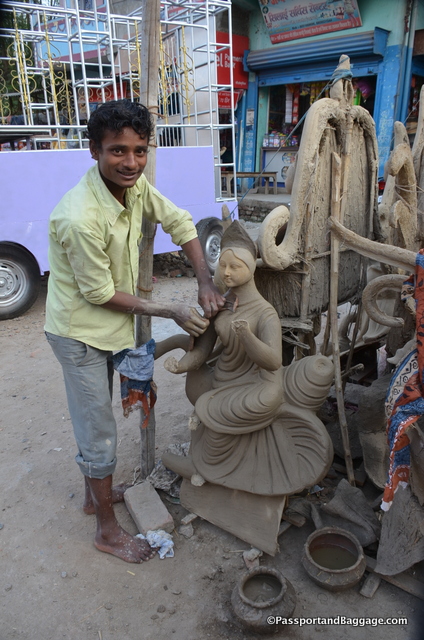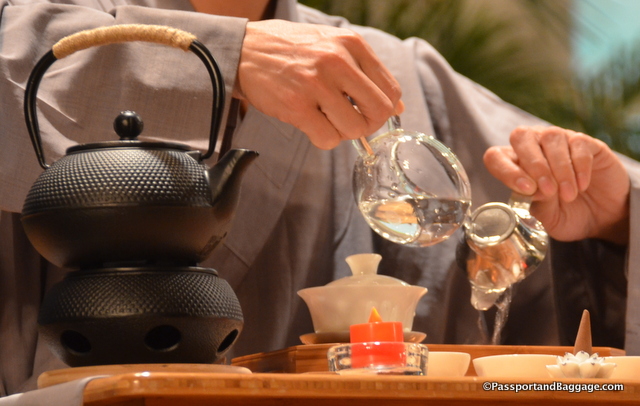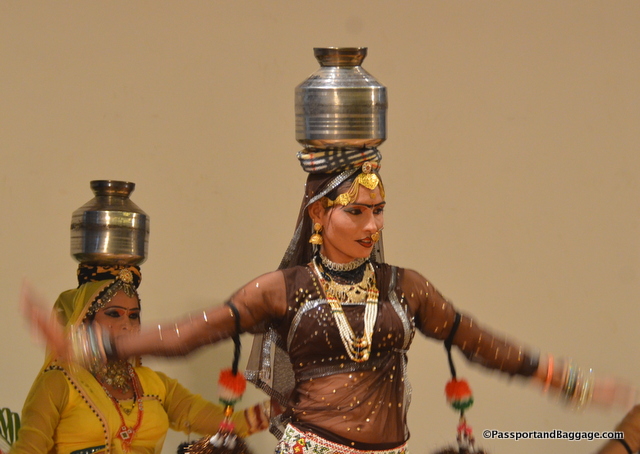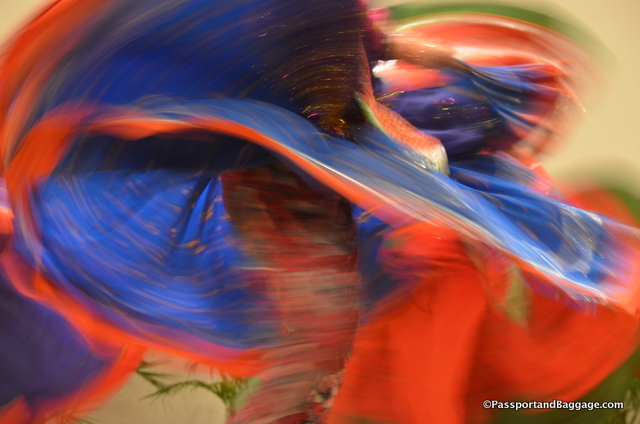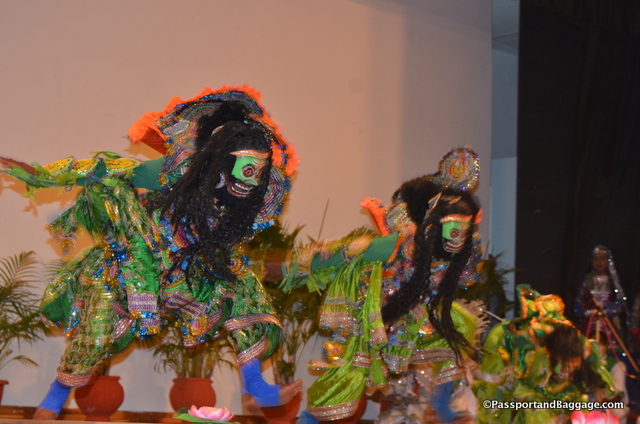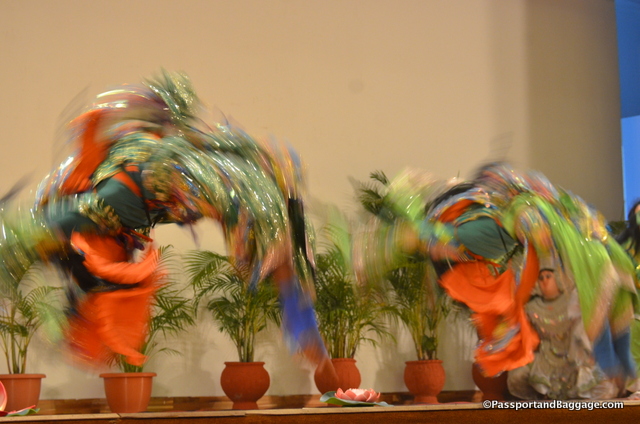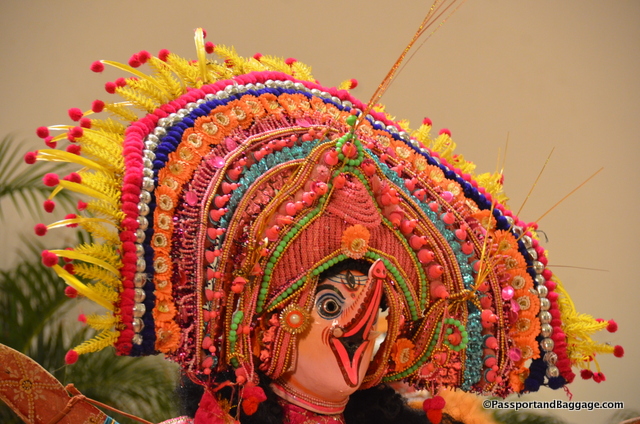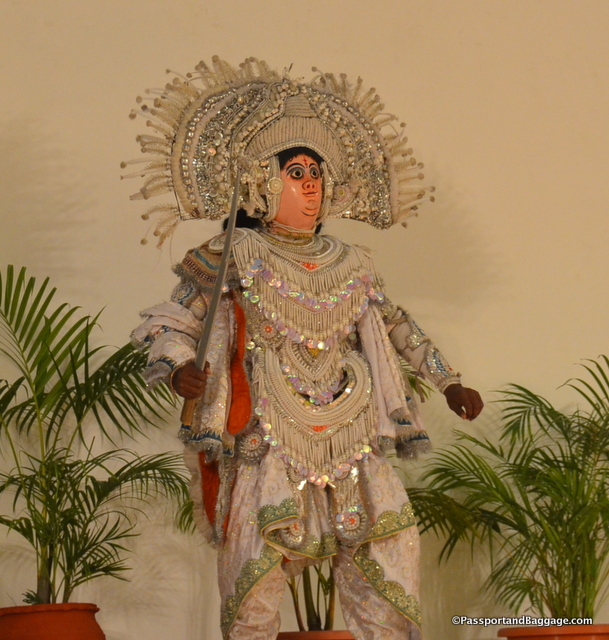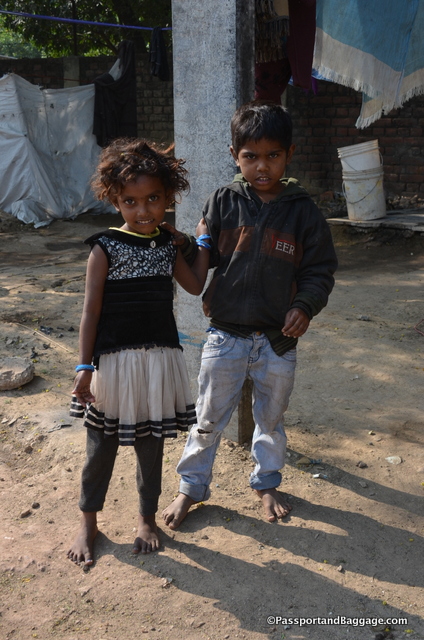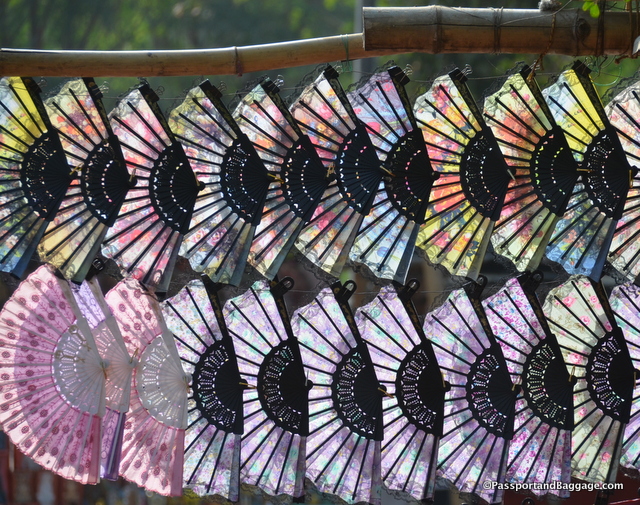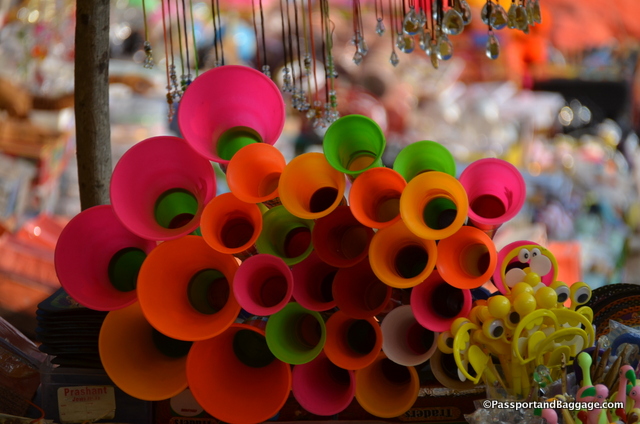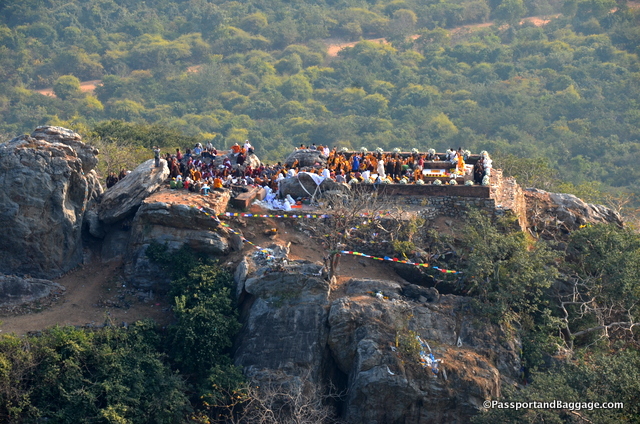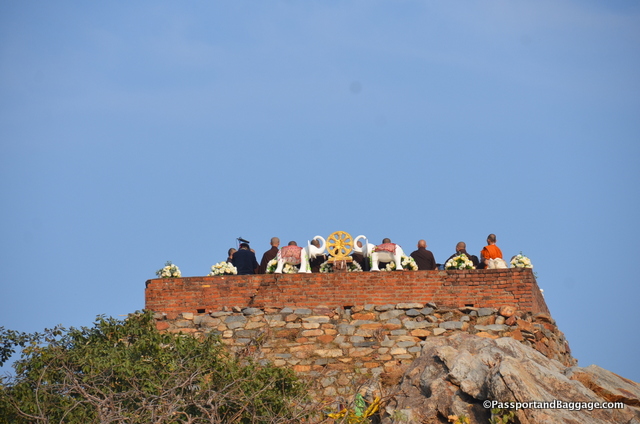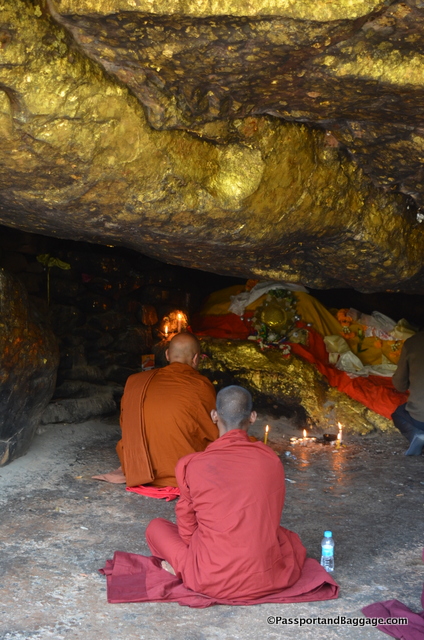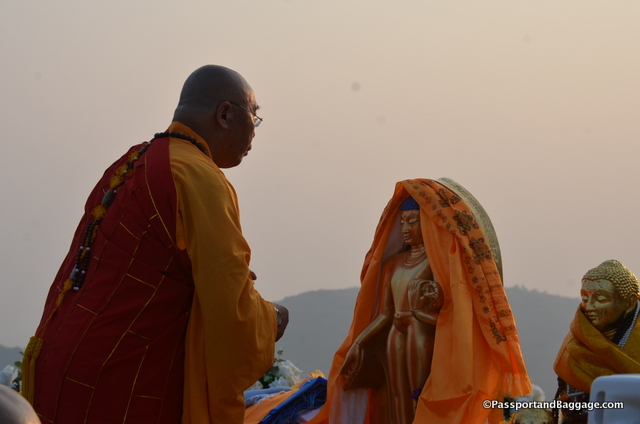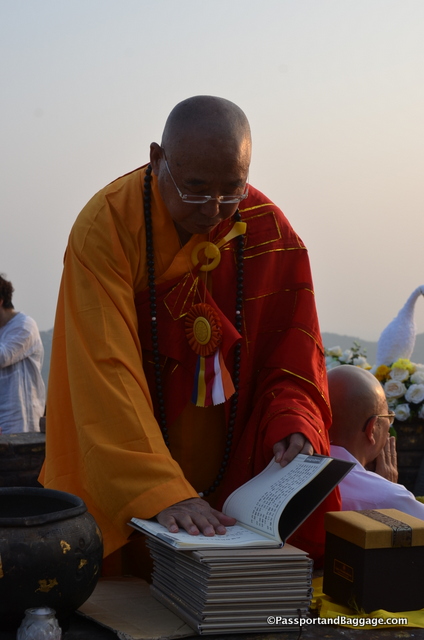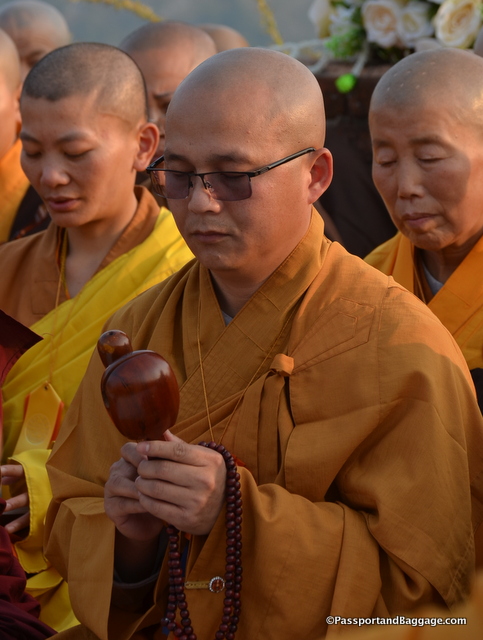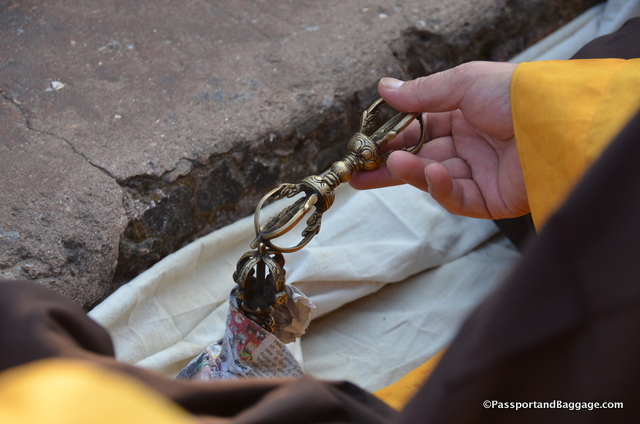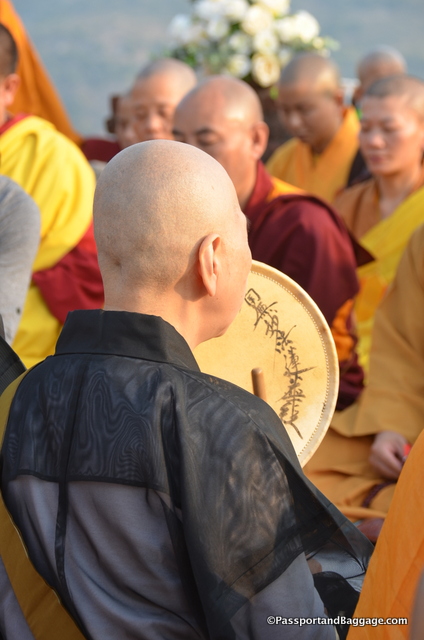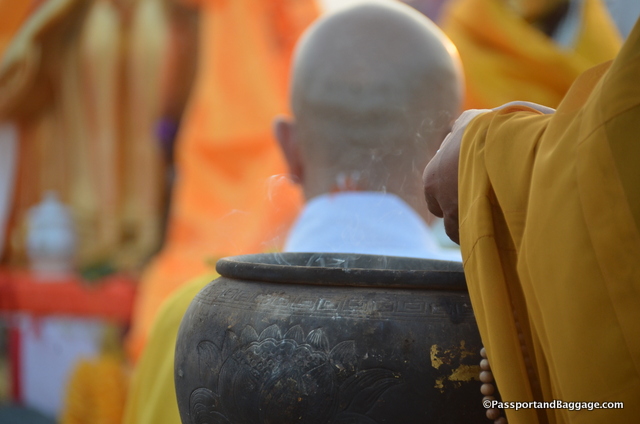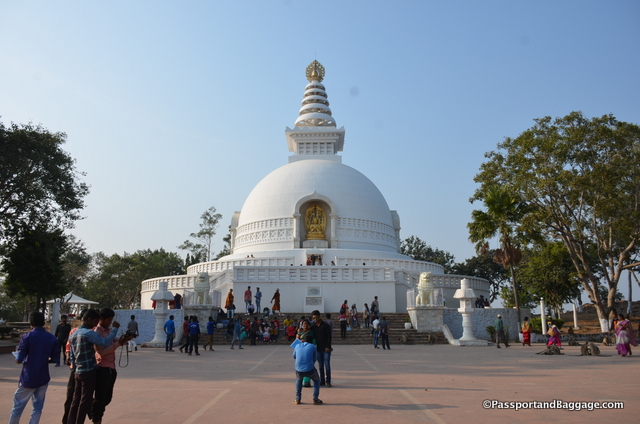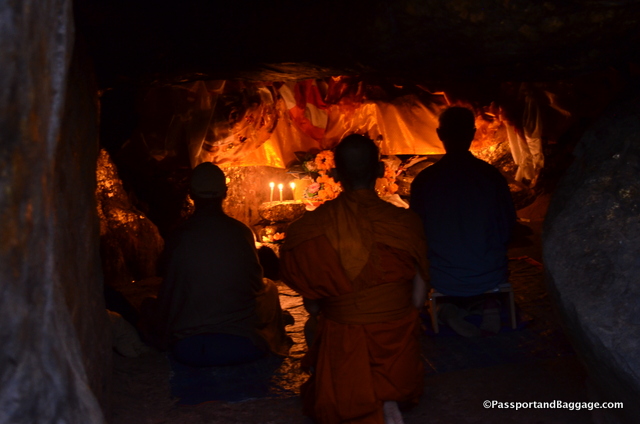Rajgir
November 24 and 25, 2018
Ghora Katora Lake is a small, serene spot near Rajgir. The name Rajgir came from Rājagṛiha ‘house of the king’ or “royal house”. Rajgir had been the capital of the Magadh kingdom until the 5th century BCE. It is said that the lake had been used for watering the horses of the royal army, thus its name, Gohra Katora (Horses Bowl).
The lake sits in a valley surrounded by seven hills (Chhatha, Ratna, Saila, Sona, Udaya, Vaibhara and Vipula).
This Buddha was the brainchild of the chief minister of Bihar, Nitish Kumar, (member of the Janata Dal political party) and the Bihar State Tourism Development Corporation (BSTDC). The beginning of the road to the lake shares the same parking lot as Vulture’s Peak, so it is obviously an attempt to continue to develop tourism in Rajgir.
It was in Rajgir that Gautama Buddha spent several months meditating, and preaching at Vultures Peak. He also delivered some of his famous sermons and initiated King Bimbisara of Magadha and countless others to Buddhism.
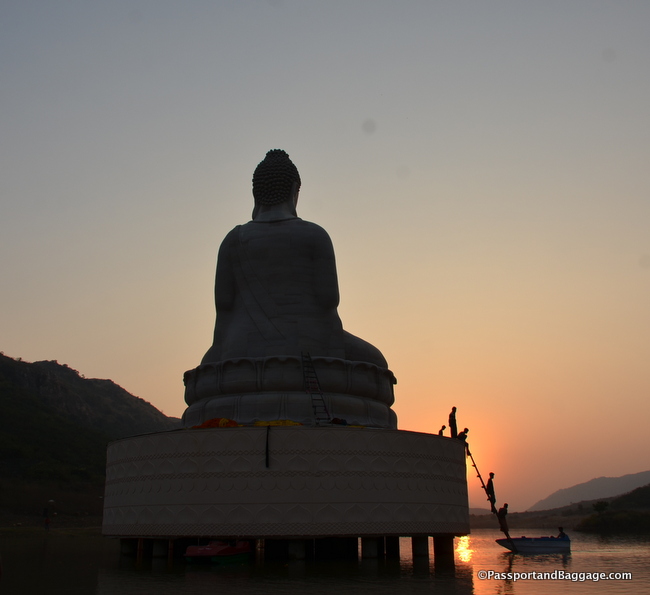 This is intended to be an eco-friendly park. There will be no motor vehicles allowed, and other than two highly ugly concrete watchtowers, only natural materials will be allowed when constructing edifices around the lake.
This is intended to be an eco-friendly park. There will be no motor vehicles allowed, and other than two highly ugly concrete watchtowers, only natural materials will be allowed when constructing edifices around the lake.
Transportation down the 6-kilometer road will either be by electric carts that carry around 12 people or the traditional horse carts of Rajgir.
This being said, the first thing I thought was how when I return in a year the lake will be a garbage pit. I didn’t have to wait a year, by the end of the second day the road was strewn with trash.

The most common, and economical form of transport in Rajgir are these horse drawn carts. There are no Tuk Tuks in Rajgir
The property sits in the middle of India’s forest land and is overseen by the Department of Forestry.
I was there as the guest of one of the people responsible for the Buddha’s presence in Ghora Katora Lake. We arrived in the evening as the area was being readied for the morning’s ceremony.
A khata is a traditional ceremonial scarf. It originated in Tibetan culture and is common in cultures and countries where Tibetan Buddhism is practiced or has a strong influence.
The khata symbolizes purity and compassion and is worn or presented with incense at many ceremonial occasions, including births, weddings, funerals, graduations and the arrival or departure of guests (including hotels). It is often made of silk.
Tibetan khatas are usually white, symbolizing the pure heart of the giver, though it is quite common to find yellow-gold khatas as well.
We motored around the lake as the monks prepared the statue. The Japanese monks chanted while we motored.
This is the sculptor, Deepak Kuar Gour. He explained that the statue is solid concrete and 38 feet tall. The Lotus stand it sits on is sandstone from Chennai and carved by another artist, it is 12 feet tall, making the entire statue 80 feet tall.
Here is the Buddha the next morning. It was apparent by all the work that I saw that they had, in fact, worked all night.
The next morning we began our journey with many of the attending monks. These two Tibetan’s are carrying ritual items for the altar.
*
The event was a small intimate affair, with Chief Minister Nitish Kumar as the guest of honor. For that reason, there was also a contingent of army men with guns. Not to be dismissive of Indian army members, I always have a queasy feeling when I am in the presence of third world armies carrying automatic weapons, at least these guys were up in the bushes and soon forgotten.
The Chief Minister appeared to be a truly lovely man. I had the absolute honor of placing a katah on him. His smile was infectious and kind.
He endeared himself to Biharis, used to low expectations from politicians, when with his socialist policies he brought in more than 100,000 school teachers, ensured that doctors worked in primary health centers, electrified villages, paved roads, cut female illiteracy by half, cracked down on crime and doubled the income of the average Bihari.
A Chief Minister is similar to a Governor in the U.S.
I am incapable of getting down and sitting on the floor, but I was asked to join the podium where the VIP’s were I could not pass up the honor. So, I plopped down with all the grace of a wounded water buffalo and took photos of the program through the crowd.
After the prayers, the Tibetan monks passed this plate of rice. You grab a handful and toss it for good luck and good blessings.
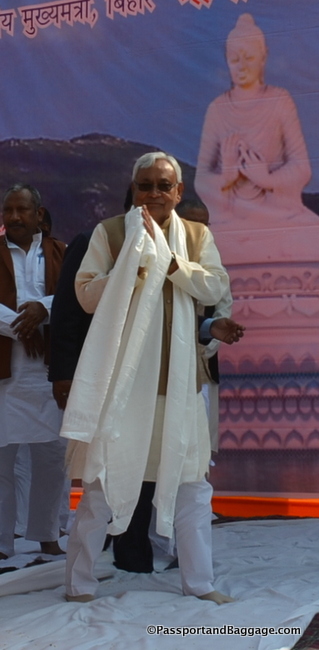
The Chief Minister is wearing the katah I placed on him. No, I am not special, it is customary to take them off as soon as you can, and then his security people gave it back to him to leave, mine was last on so it was probably the easiest to grab.
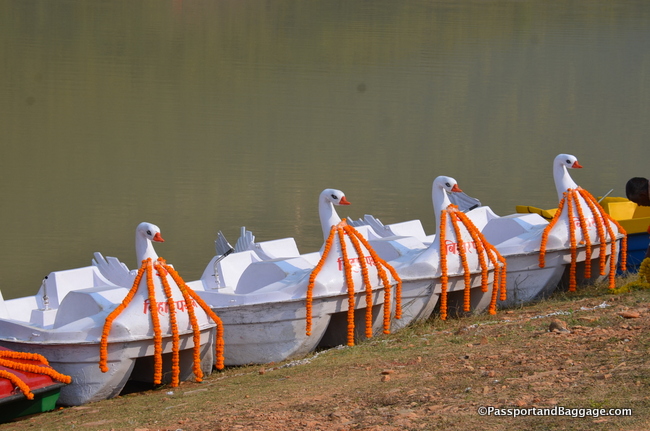
These boats were all decorated, and as soon as the Chief Minister took off the press grabbed these and followed, it was quite a hysterical scene.
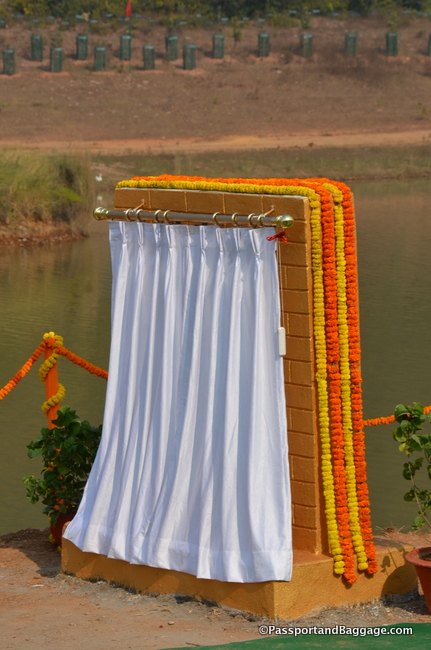
The Chief Minister pulled the cord to reveal the plaque in honor of the Buddha and the governments work to make it happen
We all left the way we arrived, but this time the horses did not saunter, but ran, making the trip far more “exciting”
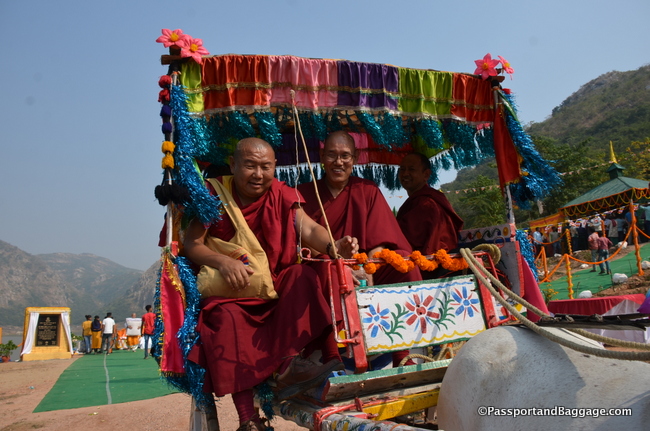
The monk on the right is Shartse Khensur Jangchup Choeden, executive Director of the Geluk International Foundation and a liason for the Dali Lama
*
